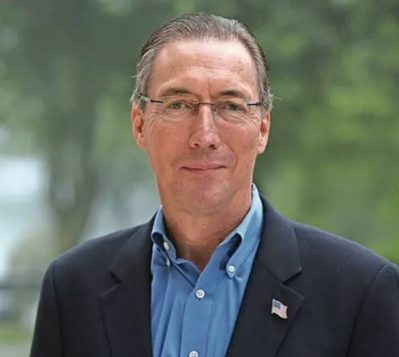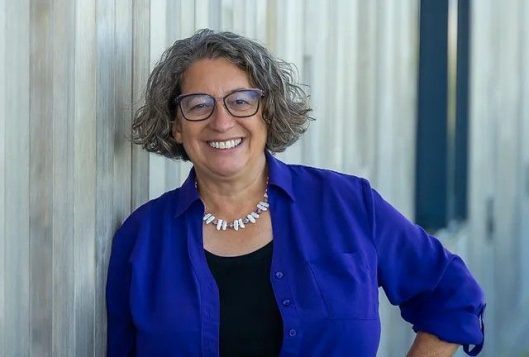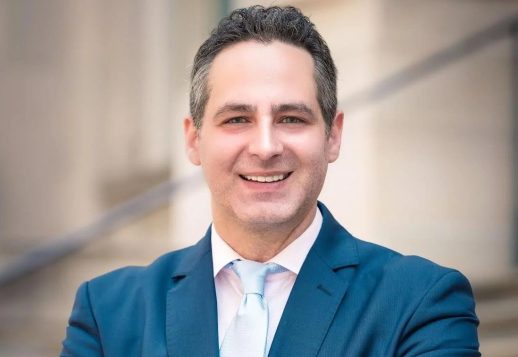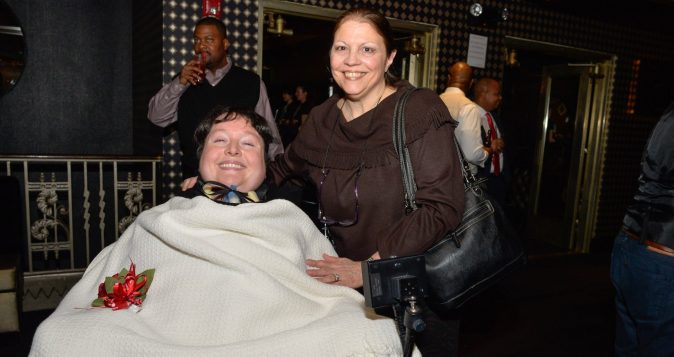Thank you from the White Family
To: Reverend Lisa of Bethel AME Church; our Bethel Church family; The Three Village community; Kevin Finnerty, director of athletics at Ward Melville High School; the Ward Melville faculty, Booster Club, students; Town of Brookhaven and others:
Words can’t express the heartfelt gratitude you all showed in your own special way during our time of sorrow. Thank you all so much for your kind words, cards, love and support!
Your memories, tributes and accolades that you shared were absolutely beautiful! They truly warmed our hearts and eased the pain for the moment. We knew Willie was special to his family, but from the attendance at his wake, homegoing celebration of life and repass, showed the love you had for him. Willie L. White is gone for now, but truly left a legacy that will forever live in our hearts.
Sincerely With Love,
The White Family
A call for fiscal accountability
The Port Times Record of Feb. 8 published a letter [“Rallying against unjust state aid cuts”] from Jessica Schmettan, superintendent of schools of the Port Jefferson School District, asking residents to use a district-provided form letter opposing the New York State governor’s proposed cut of 28.38 % in state aid (“Foundation Aid”) to the district.
I chose to write my own letter and sent state Assemblyman Flood [R-Port Jefferson] and state Sen. Palumbo [R-New Suffolk] the following:
I’m a longtime resident of the Port Jefferson School District and notice that the district is aggressively encouraging parents to engage in a letter-writing campaign to state legislators regarding the cut in Foundation Aid proposed in the governor’s [Kathy Hochul (D)] budget. I’m sure you will receive the form letter the district is circulating.
At this time, I would encourage you to examine the fiscal practices of this district. While the enrollment in the district continues to decline (from the present 910 students overall to projected enrollment close to 766 students by 2031) the district has done nothing to address this, despite numerous comments by district residents at Board of Education meetings.
Instead, a pattern of spending has seen district funds expended of close to $800,000 on new bleachers on an athletic field, $240,000 on sod for that field, and a proposed “security booth” projected to cost close to $400,000.
Two recent multimillion dollar bond issues ($23 million and $16 million, respectively) calling for substantial enhancements in an existing school building, as well as an artificial turn field costing $1.6 million, were wisely rejected by residents, although the district continues to ignore the message sent by residents.
Despite the significant drop in enrollment, administrative staffing in the district has not been reduced nor has the district explored other potential cuts to address this major financial problem.
The revenues from a Long Island Power Authority plant in the district are rapidly dwindling and the district presently faces seven Child Victims Act lawsuits. (The latter has only been acknowledged by the district when the proposed Foundation Aid cut was announced.) Transparency has not been evidenced by the school board and the administration.
While you are examining the campaign to restore Foundation Aid cuts to the district, I would strongly encourage you, in the interest of fiscal prudence, to examine the spending practices of this school district and hold the board and district accountable for the lack of effective stewardship of taxpayer funds.
Charles Backfish
Port Jefferson
Cut the losses!
The recent article in the Port Times [“Uncertainty looms over the future of Port Jefferson Country Club,” Feb. 8] shows the futility of trying to keep back the forces of nature — the way of wind and waves — as concerns the East Beach bluff. For some of us the attempt to save the country club building always seemed a fool’s errand.
To start with: Nature usually wins, but the previous village board of trustee’s would not admit to this, and forced without a vote a [$10 million] bond onto our taxes. See where this got us.
What to do? Declare the loss and build a more modest country club house way, way back, and let nature take its toll on the bluff; and focus on how to protect the downtown area with parks, shops, apartments and ferry infrastructure for the future and coming high waters.
Bente and Flemming Videbaek
Port Jefferson
Immigration history lesson
I want to thank Arnold Wishnia for the history lesson on immigration [“A critical analysis of immigration rhetoric,” TBR News Media letter, Feb. 8]. I was totally unaware that it occurred before the latest wave or that throughout human history some groups of people — including “mostly brown” people as Mr. Wishnia writes — treated other groups of people poorly. What an eye-opener. An eye-opener for him is that it is not only “Latin American immigrants” who are coming here illegally and in fact we don’t know who is coming. For this and many other reasons fear is reasonably mongered.
I could not and did not disregard “[George] Altemose’s inflammatory talk of invasion” as I do not know him and have not read the letter he wrote. This did not stop Wishnia from making assumptions about heroes and projection. An artful word to describe these assumptions is “prejudice” as Wishnia has, indeed, prejudged me.
Wishnia concludes by writing that I slandered the racist and sexist policy of diversity, equity and inclusion by describing it as racist and sexist. Let me ask him: If he did not get accepted by an Ivy League college or get hired as a university professor because of a quota, would he consider that to be “rather minimally” a mitigation of harm inflicted — not by him, but by other people? It seems that like Bruce Stillman [president and CEO of Cold Spring Harbor Laboratory], Wishnia’s prototypical elitism is showing.
Paul Mannix
Wading River
One year after Grand Central Madison’s opening
There is still much to do one year after the opening of the Grand Central Madison station. Information was omitted from the MTA ceremony celebration that Port Jefferson LIRR branch riders would be interested in.
How many of the original 73 East Side Access contracts has the MTA completed? What is their collective dollar value? How much of the $600 million in debt service payments buried in the agency operating budget that covered project costs are still outstanding?
The same applies to several hundred million more in debt service payments that financed $4 billion worth of LIRR readiness projects to support start of full service in February 2023. They are carried offline from the official project budget. These include the $2.6 billion Main Line Third Track, $450 million Jamaica Capacity Improvements, $387 million Ronkonkoma Double Track, $120 million Ronkonkoma Yard Expansion, $44 million Great Neck Pocket Track, $423 million for rail car fleet expansion. Without these, the LIRR would lack the expanded operational capabilities to support the promised 24 rush-hour train service to GCM and 40% increase in reverse peak rush-hour service. Honest accounting would include these other expenditures bringing the true cost of ESA to $16.1 billion.
How many thousands of the original promised daily ridership projection has not been achieved? This goes for the reverse peak as well. Why does Grand Central Madison still not provide 24/7 service as does Penn Station?
Grand Central Madison still has only two men’s bathrooms with a total of 18 urinals and 13 toilets, two women’s bathrooms with a total of 25 toilets, one lactation room and two gender neutral bathrooms each with a single capacity, all located on the Madison Concourse. There are none on the lower or upper level platforms and mezzanine.
There is still only one waiting room located on the Madison Concourse. It has only 29 seats and seven stools for Wi-Fi connections to serve riders. There are no other seating options on the platform and mezzanine levels while waiting.
Options for recycling newspapers or beverage containers, disposal of garbage or other waste continues to be nonexistent except for a handful of garbage cans at the platform level. There are few options to dispose of waste at either the mezzanine or Madison Concourse levels. This conflicts with MTA’s claim to be environmentally friendly.
There are still no open newsstands. These services are readily available in Metro-North Rail Road Grand Central Terminal, Penn and Jamaica stations.
There are 11 ticket vending machines still waiting to be installed. It appears that the designed space is not wide enough to accommodate standard LIRR ticket machines.
All the facility storefronts still stand vacant. The original completion date was 2011. Full-time service began in February 2023. MTA Real Estate had years to find tenants for the 32 vacant storefronts. MTA Real Estate has yet to issue a request for proposal to find a master tenant to manage all 32 vacant storefronts. When will this take place?
The MTA Arts & Design recent announcement that it is presenting a selection of works from photographer Stephen Wilkes’ “Day to Night” series of famous New York landmarks at this facility is of little value to most commuters. Some advertising posters would be better and generate some badly needed revenue.
Transparency on the part of Gov. Kathy Hochul [D], MTA Chairman Janno Lieber and LIRR President Richard Free in sharing with commuters, taxpayers, transit advocates and elected officials in dealing with these remaining open issues is required
Larry Penner
Great Neck


























